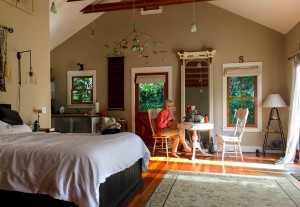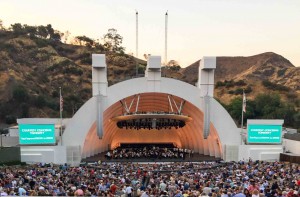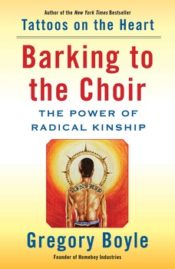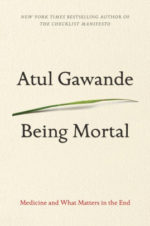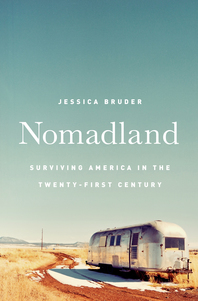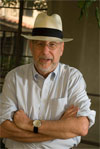Five Days in La La Land: Hiding in plain sight in Hollywood
Posted on | August 14, 2017 | Comments Off on Five Days in La La Land: Hiding in plain sight in Hollywood
Leanne and I have explored Paris on the #69 bus that goes to the Pere Lachaise cemetery and Florence, where the #7 bus goes up the hills for a view of the city. We visited Berlin when we were young, before the Wall went up, and when we were old after it came down. We got to know London and Melbourne well, came to love Venice. But in 40 years of living in Southern California, we’ve never spent a week in L.A.
We corrected that oversight, spending a delightful week in a cottage, formerly a stables behind a 1906 house in Hollywood. Los Angeles has the reputation for being a hard city to visit, with its sprawl and vast distances. Around the intersection of Hollywood Blvd. and Highland Ave., a tourist magnet draws the curious to the sidewalk embedded stars, a couple historic theaters, and frequent media events. But, hiding in plain site are streets where people live and where interacting with them brings the same spontaneous delights as talking to an old schoolteacher in Italy or a Black Cab driver in London.
Our Airbnb, was billed as Idyllic Hollywood Cottage Oasis, and it was as good as its ad. We settled into the cottage, which architect and owner Jeff Smalley had redesigned. The old barn door slides to close off the bathroom. That evening, we walked a few blocks to The Pikey on Sunset Blvd., a Brit influenced pub and restaurant with good beer and an interesting menu, including vinegar chicken and a side of thrice cooked fries. A bit like landlubber’s fish and chips.
Part of our plan was to visit bits of L.A. architecture not seen. So, Tuesday, we headed to the Frank Lloyd Wright designed Hollyhock House in Barnsdall Park, just off Hollywood Blvd. But, as the friendly security guard told us, the house isn’t open on Tuesday. Still, it was a nice encounter, and when we returned on Friday we were told that the interior tour was entirely self-guided. Not so, we found. Three feet inside the door, we were greeted by a docent who said, “the first thing you’ll find out about us is that we love to talk.” Twenty minutes of stories followed, about the hollyhock theme—they were Aline Barnsdall’s favorite—built into the structure and the decorations, about Wright’s indoor-outdoor vision, including a stream that flowed through the living room, and in true Wright fashion, leaked.
The house was built in 1919-1921 and it fits L.A. as the prairie-style houses fit Chicago. Every room has an outdoor counterpart space, and there are sweeping views of the L.A. basin and the Hollywood Hills. Barnsdall hardly lived there. She gave the house to the City of Los Angeles in 1927 as an art park, and there is now a theater and municipal art museum on the site as well as the original house. The city has done well by the gift, refurbishing the house several times, the most recent one included bringing back or rebuilding much of the original furniture.
Tuesday evening we headed to the Hollywood Bowl. We had not been to the Bowl in decades, having declared it just not our scene. The big cement arena just didn’t have the summer music ambiance we remembered from Ravinia, north of Chicago, and transit was difficult. But from our cottage, the friendly Über driver wound us through the Hollywood Hills avoiding the traffic.
We may not have appreciated “the scene” when we were younger, but the Bowl offers great people watching: more diverse than Disney Hall downtown, and more joyous.
The L.A. Phil has become one of the most interesting orchestras in the world, and Beethoven’s Ninth promised to be a treat. Little did we know that it would become political push back. The program began with Aaron Copland’s “Fanfare for the Common Man,” and transitioned to his “Lincoln Portrait,” with the speaking part masterfully done by Vin Scully, probably the best loved personality in the city who had just retired from 67 years of baseball announcing. He knows a thing or two about creating a dramatic pause, and when he intoned Lincoln’s phrase, “Fellow citizens, we cannot escape history,” the import was not lost on the 17,000 in the Bowl. There were murmurs of “Vin, in ’17.” And people cried during the “Ode to Joy.”
Yet, the week is young. On Wednesday, we visited the Schindler House, built in 1921-1922, and considered to be the first truly “modern” house in L.A. One can see the International Style of Schindler’s Austrian youth, but the house blows past that.
Schindler was Wright’s project manager for the Hollyhock house, and there are similarities—clerestory windows and indoor-outdoor connections—but Schindler’s house is more adventuresome. Its structure is cast-in-place, tilt-up concrete. Its design was for a cooperative dwelling for two couples, each of the adults having a separate studio. Instead of bedrooms, there are rooftop porches called “sleeping baskets.”
When built, Shindler’s house was at the edge of the city and of modernism. But head west on Sunset Boulevard past famous places—yes Whiskey-a-Go-Go and the Chateau Marmont still exist—past UCLA and toward Richard Meier’s hilltop travertine Getty Center. When it opened in 1997, it was thought too impossibly remote, a retreat for the rich mirroring the famously reclusive donor, J. Paul Getty.
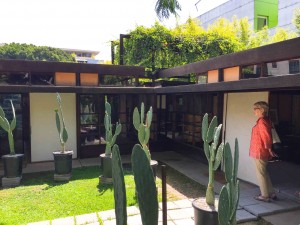
The Shindler House built in 1921 in West Hollywood is considered to be the first truly modern house in Los Angeles.
But foresight of Meier and of Getty Foundation president the late Harold Williams, showed in the throng we met while waiting for the tram that takes visitors from the parking garage to the 110-acre hilltop. Williams, whom I had met when he helped lead L.A. school reforms in the 1990s, thought that the campus, its gardens, and the sweeping views toward the Pacific, would attract people who would not come to a traditional art museum. He was right. Leanne’s gotten very good a striking up conversations with strangers, and it was fun meeting a rainbow of humanity: the African-American family having a reunion with relatives they had never met before, the family from Denmark, and the museum guard who allowed that David Hockney had actually been in the museum a couple days before (at an exhibit of his work) and that they had the temerity to tell him that he couldn’t actually smoke his cigar in the building.
Later, a nap was taken in your honor at the cottage before we headed toward another adventure: dinner at République. The La Brea Avenue eatery is #16 on L.A. Times food critic Jonathan Gold’s top 101 restaurants and fits his description of a “bistro on steroids.” The grilled octopus salad has both the bite of chile and the tartness of lime, and the Spinach Cavatelli is actually spinach infused pasta and the most glorious of porcini. Gold’s list is significant, because he is much more than a ranker of upscale restaurants. As the documentary “City of Gold” shows, he’s a chronicler and a promoter of the city’s diversity. A Gold-reviewed restaurant is just as likely to be in a strip mall or a food truck as bright-light location.

Charles and Ray Eames built this steel and glass house overlooking the Pacific in 1945. It’s stood the test of time well.
After breakfast the next day, we again headed west on Sunset Boulevard: this time all the way to Pacific Palisades and the home of Charles and Ray Eames. You, of course, have one of their chairs; mine is a knockoff from J.C. Penny. Officially, it is Case Study No. 8, one of 25 houses built as part of a project begun by Arts and Architecture magazine. Charles Eames and Eero Saarinen designed the house as a cantilevered metal box, but the Eames’ fell in love with what they called the meadow on the site overlooking the Pacific and did not want the house to intrude on it.
The completed house, which was the family home until Ray’s death, is roughly 1,500 square feet with the recognizable exterior façade of glass and red, blue, and white panels. They look Mondrian, but according to Julie the docent, Ray declared it entirely her design.
Julie and her colleagues shared the same gift for conversation and instruction as others. The Eames Foundation, which owns the house, charges $270 for an interior tour, but never mind, the place is made of glass and the friendly docent will slide open the living room door so you can take a peek, all for the senior discount tour price of $6.
We loved that the place looked well used and cluttered, dramatically different than the stark conception of mid-century modern. The modernists who lived there—maybe the most influential ones—knew that houses were to be lived in, books were to be piled and rooms jumbled with keepsakes.
Ironically, most of the other visitors were from abroad: a Dutch family and a rapt doctoral student from Japan. There were hundreds of tourists looking at the tacky sidewalk stars near Hollywood and Highland, but missing this peaceful corner of Los Angles that represented the design that we both imported from and exported to the rest of the world.
We pointed our car south on PCH (Pacific Coast Highway if you’re not from L.A.) toward Santa Monica and a stop at Bergamot Station, a collection of galleries and workshops on the site of an old rail depot…lots of corrugated metal. We poked around, and most of what we saw was uninteresting until we happened on the Peter Fetterman Gallery, which was showing more than 60 of Sebastiāo Salgado’s photographs, which I’ve long admired, both for their artistic quality and his vocational connection with the people who do the hard and dirty work of this world. His prints now sell for $8,500 and up; wish that we’d bought one of his “Workers” collection when we first saw it in London in 1993. But I forget; we didn’t have the £250 then. We settled for a lovely signed book of his images that now rests on our coffee table.
For dinner, we headed to the Tower Bar in the Sunset Tower Hotel. Not a bar, but one of the A-list destinations for a bit of old Hollywood, the Tower Bar features stunning views of L.A. at dusk and at night for those lucky enough to score a prime table. But that, as we found out, is not all of us. Apparently, not getting a good table is common enough that the New York Times in a tongue-in-cheek article about Los Angeles appropriate competitive events suggested “scoring a prime table at the Tower Bar” should qualify for Olympic status in 2028.
On Friday morning, before we drove home, we met Robin Smalley, the Cottage’s official Airbnb host who had steered us toward some interesting restaurants. She had arrived from South Africa the evening before. Robin is not given to small tasks. She co-founded m2m (mothers to mothers), an organization that is within striking distance of wiping out pediatric AIDS in nine African countries. The goal is audacious but possible, and the technique of enabling African women to work directly with other mothers is both empowering and effective. If you’re looking for a cause to support, this is a good one.
